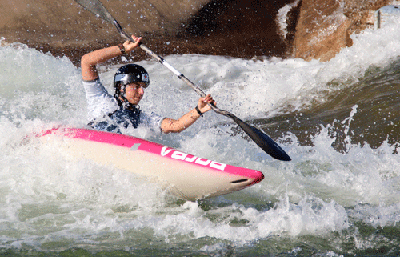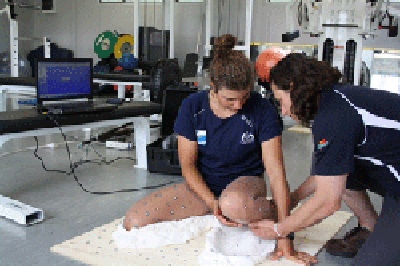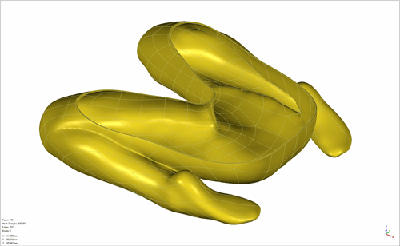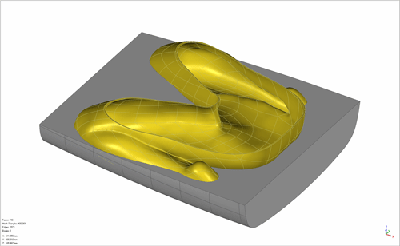HOT
 Xsens’ new MTi 600-series wins AUVSI XCELLENCE …
Xsens’ new MTi 600-series wins AUVSI XCELLENCE … The Future Group, Xsens and IKINEMA partner up
The Future Group, Xsens and IKINEMA partner up Live data analysis of the long jump at the FBK G…
Live data analysis of the long jump at the FBK G… Xsens and Ergoneers join forces to launch ergono…
Xsens and Ergoneers join forces to launch ergono… New MTi 600-series industrial-grade inertial sen…
New MTi 600-series industrial-grade inertial sen… Xsens North America Celebrates New Office Grand …
Xsens North America Celebrates New Office Grand … Xsens’ latest update takes outdoor motion captu…
Xsens’ latest update takes outdoor motion captu…
Kayak Slalom Presents Olympic Engineering Challenge
Creaform 3D scanners and Geomagic 3D scan software come to the aid of Australia’s kayak team
CREAFORM, GEOMAGIC AND WYSIWYG 3D COME TO THE AID OF AUSTRALIA’S KAYAK TEAM

Olympic sport keeps pushing athletes to find new and nuanced ways to condition their bodies. The same is true with their equipment. Engineers continually look for new refinements that propel the competition to a new level. (Image left: Olympic Kayaker Jessica Fox in action.)
Much of this latter challenge lies in the realm of biomechanics, or movement science. Ami Drory is biomechanist at the Australian Institute of Sport.
One of his new developments for the 2012 summer games in London was to find a better “fitout” of kayakers in the canoe slalom. (Image left: Scanning with the Creaform REVscan to get the lower body shape of Jessica.)

Fitout means building a custom interface between the athlete and the craft currently typically made of foam and wood for the seat of the craft.
It sounds like a simple matter of measurement and cushioning, but in the slalom, optimal fitout gives the competitors an especially crucial edge. In the event, paddlers have to maneuver through 18-25 gates as fast as possible. The tough parts are the segments that are upstream. To propel against the whitewater, the paddle, kayaker, and canoe have to act together as one.
“The transfer forces applied through on the water through the paddle is a primary determinant of success,” explains Drory. “A good fitout allows the athlete to use their full range of motion while transferring as much propulsion as possible to their craft.”
Automated measurements for better fit
Past methods of fitout have been laborious and the results are not easily repeatable. “There can be a frustrating process of trial and error and wasted material before you get it right,” Drory says.
Tasked with about a dozen customizations in a limited time window, he decided to explore an alternative process for fitout.

His goal was to develop a reliable and repeatable series of digital procedures that would start with real forms of boat and athlete and end with manufactured parts. (Image left: Scanning both the athlete and kayak)
The first step was to accurately scan the athlete in position. AIS owned its own 3D laser scanner for use for use predominantly for the estimation of athletes’ body composition, but Drory says the device was inadequate for the project because of the amount of detailed surfacing required in each customization. To handle such a large set of geometric data, he enlisted the help of a Canadian, Sébastien Dubois, an application specialist from the Quebec City-based scanner developer Creaform.
Preparation_Clay_Knee_Position-250.png

Dubois brought one of Creaform’s portable handheld laser scanners, the REVscan, to the AIS Canoe-Kayak Slalom facility in Penrith. The REVscan is a lightweight handheld 3D scanner weighing just 2.1 lbs, with a resolution of 0.004 inches, and an accuracy of 0.05 inches. Used at a standoff distance of up to 12 inches, this is an ideal scanner for accurate, close-in work. It is perfect for organic shapes such as human bodies, and generates industrial level accuracy results. (Image left: Creating a clay mold that will also be scanned for greater accuracy)

Scanning kayaker Jessica Fox (London 2012 Olympic silver medalist) in position wearing a webbing of point markers, Dubois and Drory created the initial digital test model. The scanning equipment, featuring TRUaccuracy technology (which ensures highly-accurate measurements, regardless of the environment) mapped 3,500,000 polygons-worth of 3D points in about an hour. Another thorough two-hour scan captured the interior of Fox’s competition kayak. (Image left: Creating a clay impression of the inside of the kayak for scanning into 3D.)
Using Creaform’s VXelements software, Dubois produced STL polygonal data files of the scans which were imported into Geomagic Wrap by WYSIWYG 3D, a 3D service provider in Sydney, Australia. Geomagic Wrap is ideal for fast, automated processing of almost every kind of 3D data into precise NURBs surfaces for use in CAD. Both Fox’s body scan and the kayak scan were processed through Geomagic’s system where they could be saved as IGES data for import into SolidWorks.

Once in the CAD system, Boolean operations on the data could be used to enable precise modeling of the kayak fitout, customized perfectly to the athlete’s unique body shape. Using this process, Dubois scanned and processed 11 athletes’ scans in 3 days. (Image left: 3D NURBs model of the athlete ready to be used in CAD engineering processes)
Changing what is possible

Stéphane Auclair, vice president of marketing at Creaform, commented on the success of the project: “The Olympics is always a place where barriers and limits are meant to be broken. This is the sort of project which really illustrates how 3D scanning advancements are changing what is possible. More and more, we are seeing how objects can be made to conform to fit unique body shapes very quickly, and as a result creating products that become a comfortable extension of ourselves.” (Image left: The athlete's scan and the kayak model together.)
Will this engineering give Australia the edge to bring home a medal in the canoe slalom? We’ll have to watch and see. Medal or not, Drory is confident that the improvements in fit will at very least shave some time off the clock, giving the athlete’s a better chance to achieve their best times.
“This project was a fast and efficient workflow from measurement to design that is individualized for each athlete,” says Drory, “The optimal boat fitout for each athlete may have a significant positive impact on the performance and success of those athletes in the 2012 London Olympics.” (Image below: The design required for the fitout customized to the athlete's unique shape, created using Boolean operations in SolidWorks from the Geomagic models.)
Drory continues: "Unfortunately the material selection and manufacturing component has proved to be the challenging aspect of the project and being so close to the Olympics, we may not get this done in time for this Olympics. Never the less, we are confident that we are on the cusp of developing a methodology that has the potential for significantly improving performance through the optimization of the interface between athlete and equipment”.
Update: Jessica Fox won the Silver medal in the K1W class, Kynan Melay came 6th in the C1 class, and with Robin Jefferys came 10th in the C2 class. One can only ponder ‘what if…?’ We got the seats done in time for them.
Ami Drory would also like to acknowledge and thank the kind contribution of WYSIWYG and the College of Engineering and Computer Science at the Australian National University for their help on this project.





































